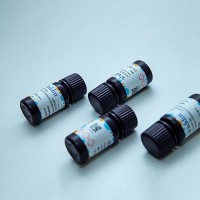The single-cell gel electrophoresis (SCGE) or comet assay is a simple and sensitive method for quantitatively measuring DNA breakage and repair in individual cells. It can be applied to proliferating and non-proliferating cells and cells of those tissues, which are the first contact sites for mutagenic/carcinogenic substances. In this technique, cells are embedded in agarose, lysed, subjected to electrophoresis, and stained with a fluorescent DNA-binding dye. Cells with increased DNA damage display increased DNA migration from the nucleus toward the anode, which resembles the shape of a comet. The migration is observed by fluorescence microscopy after staining with a fluorescent DNA-binding dye, and the intensity of the comet tail reflects the number of DNA breaks. The assay is performed in almost all eukaryotic cells and has applications in many fields, including genetic toxicology, biomonitoring, ecotoxicology, medical, and nutritional research. The assay is a very sensitive tool to investigate the effect of carbon nanotubes on DNA of human cells in vitro. This chapter describes a procedure to perform the comet assay, in its alkaline version, on cell cultures treated with carbon nanotubes.






